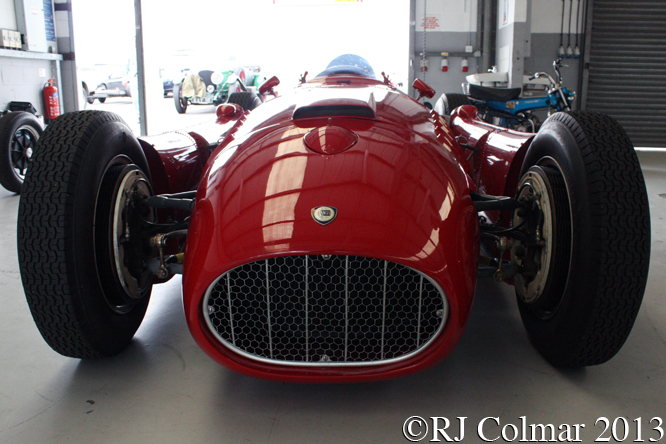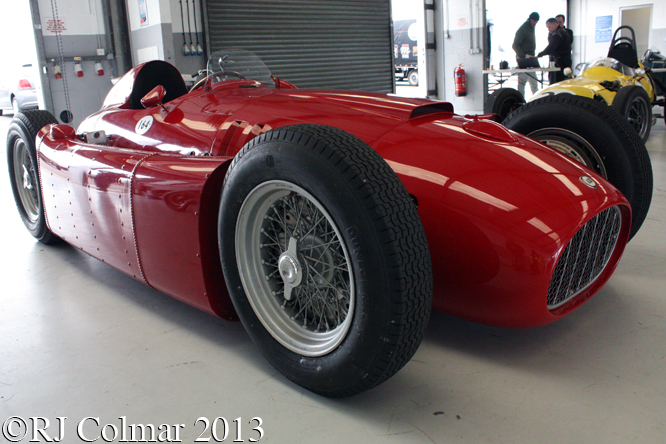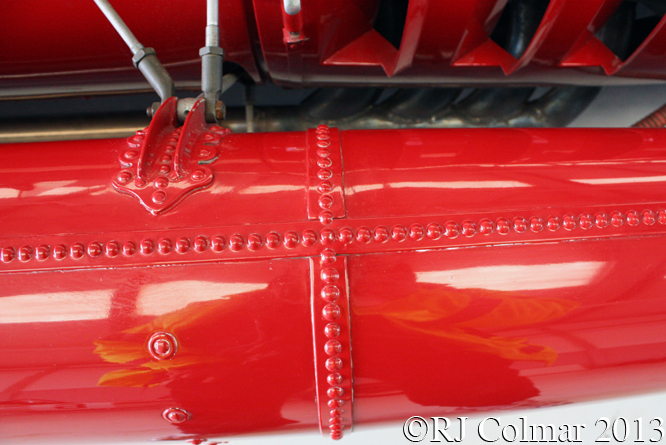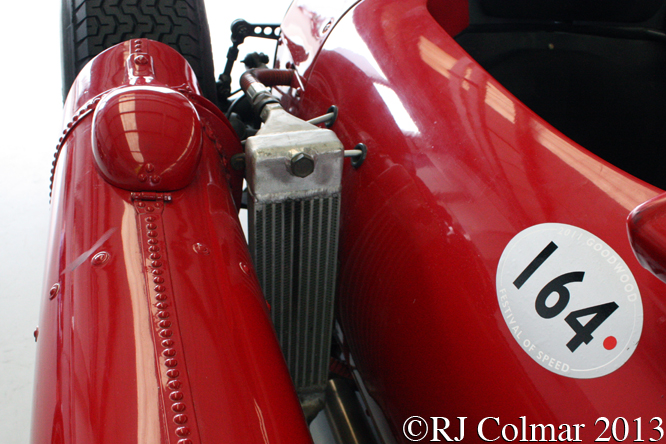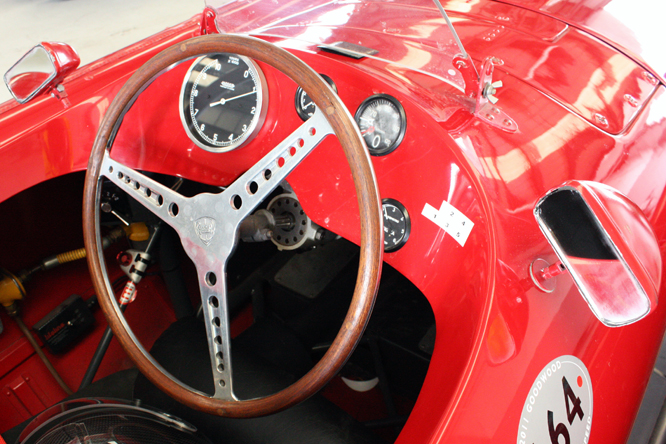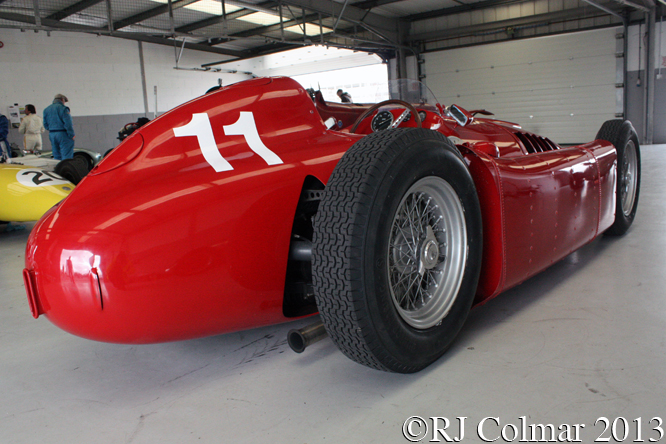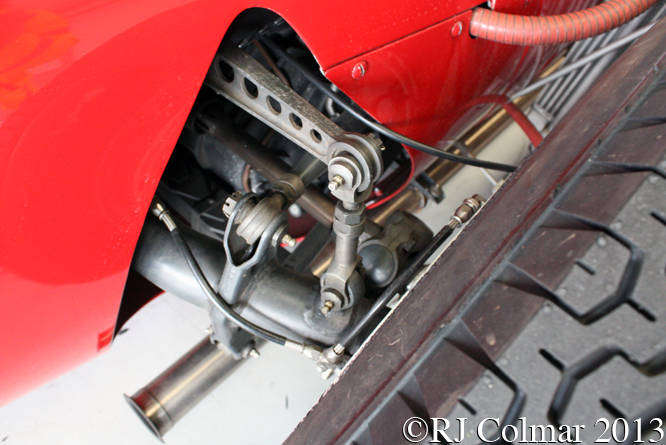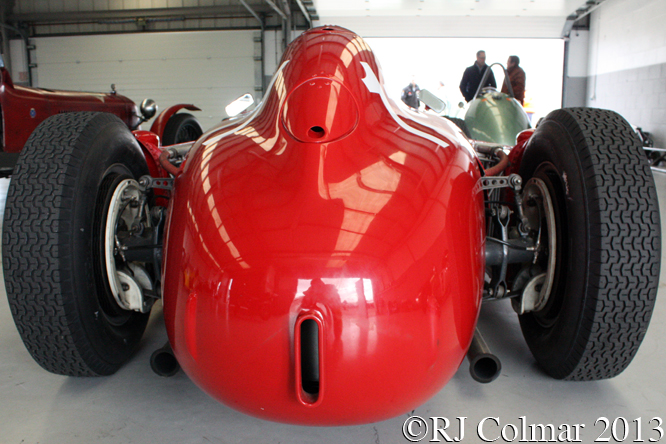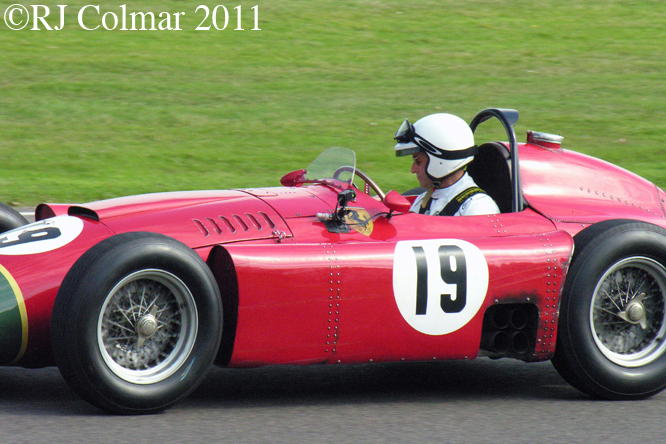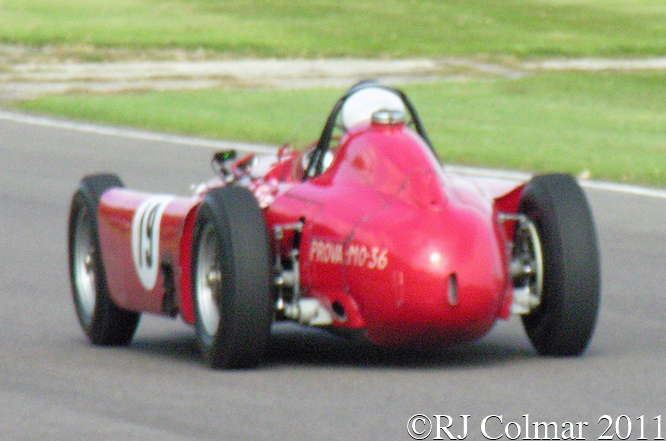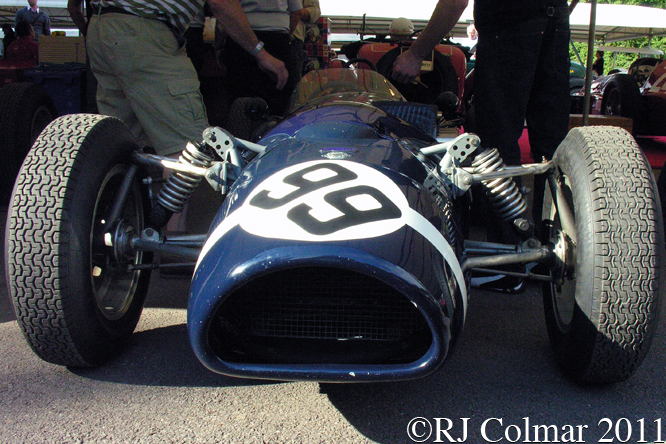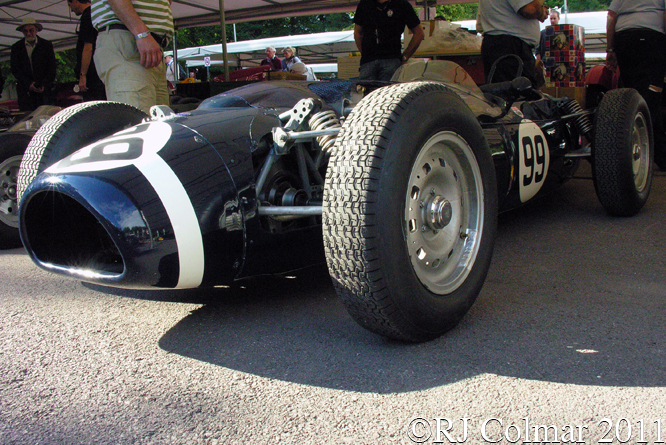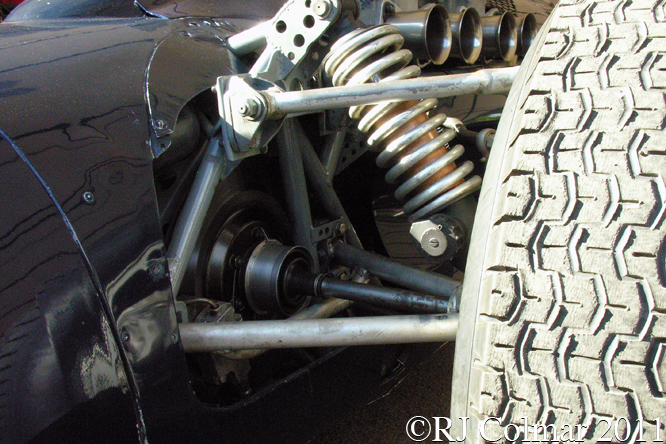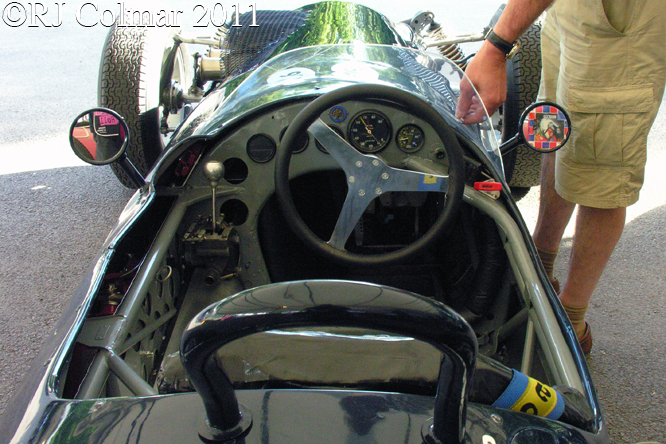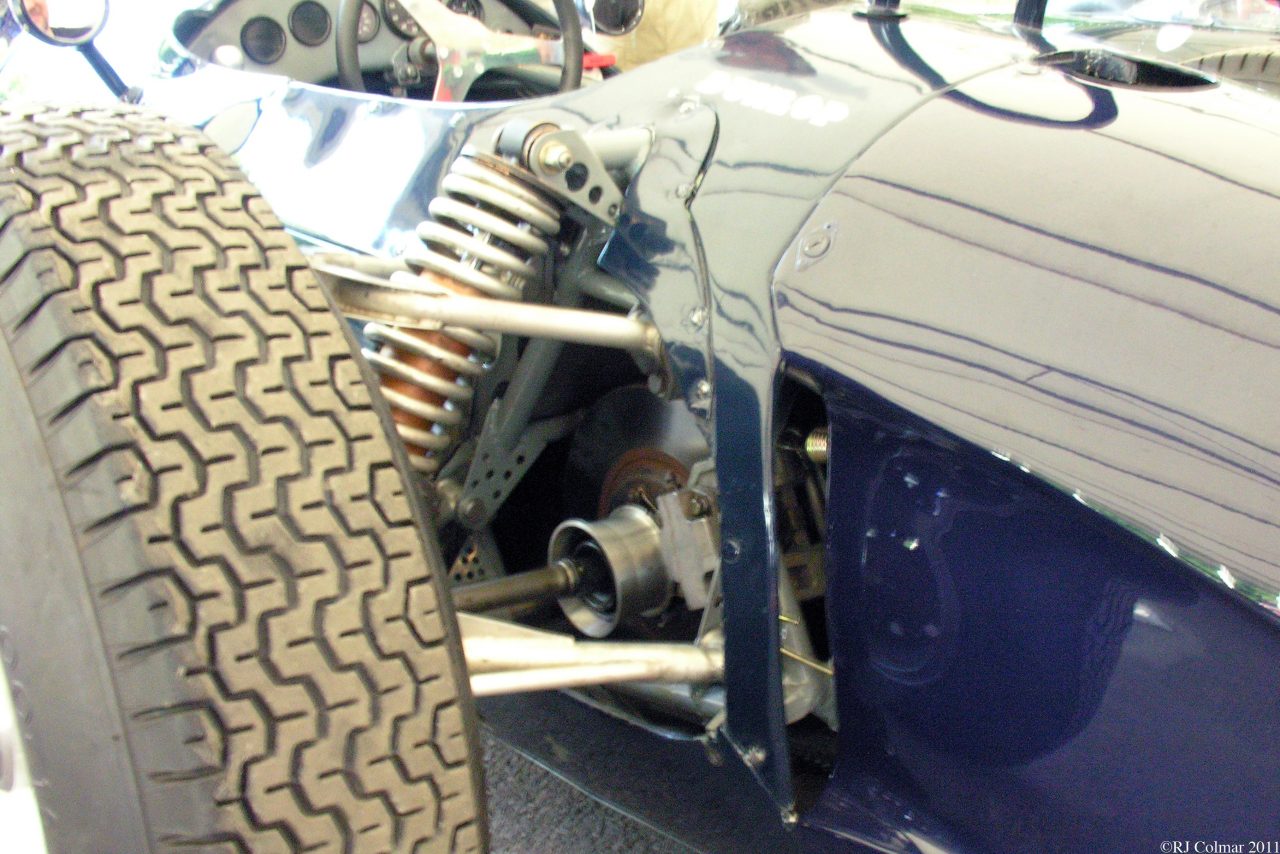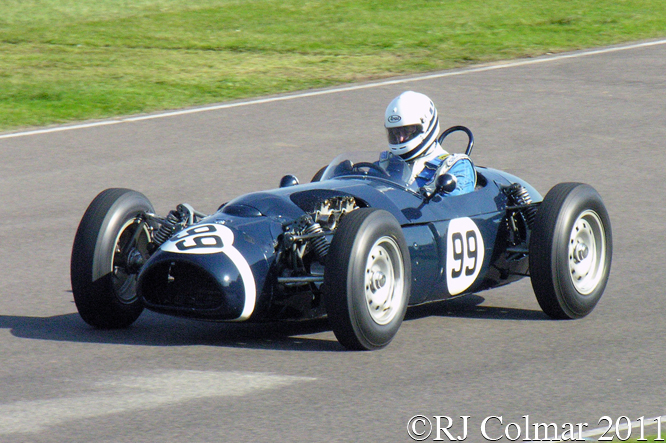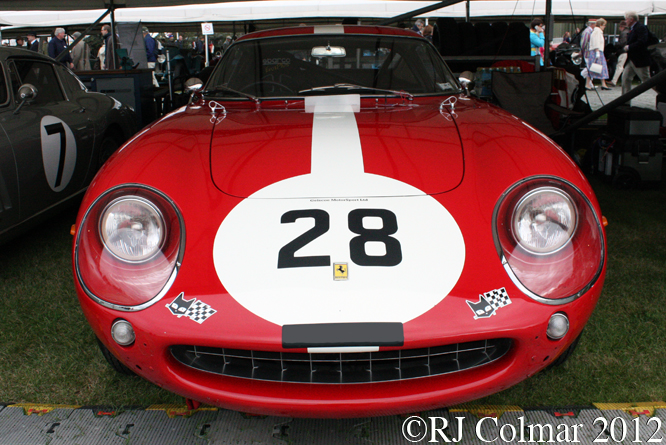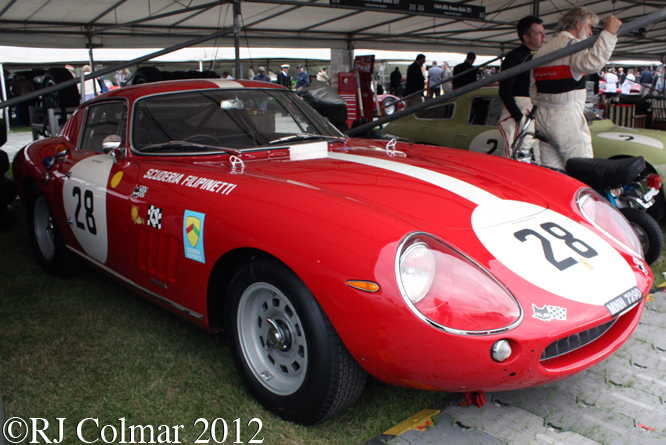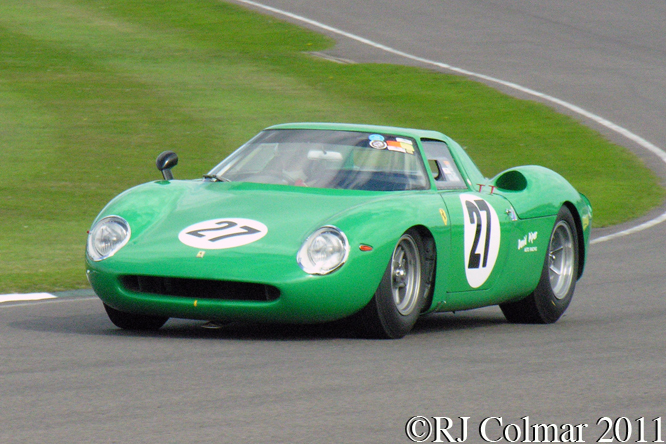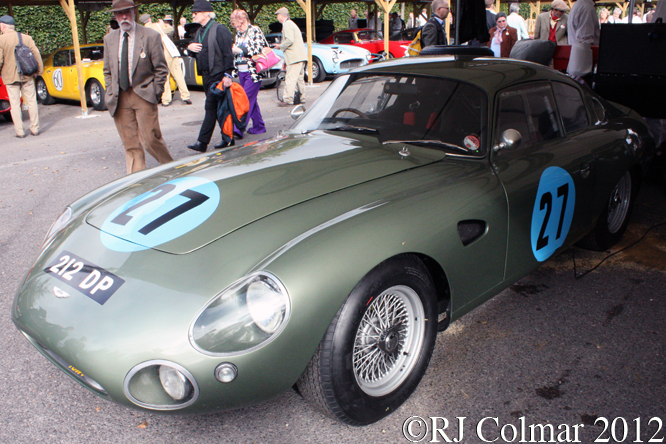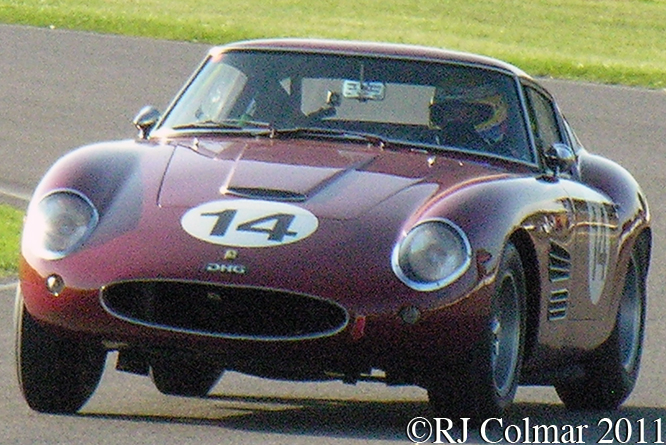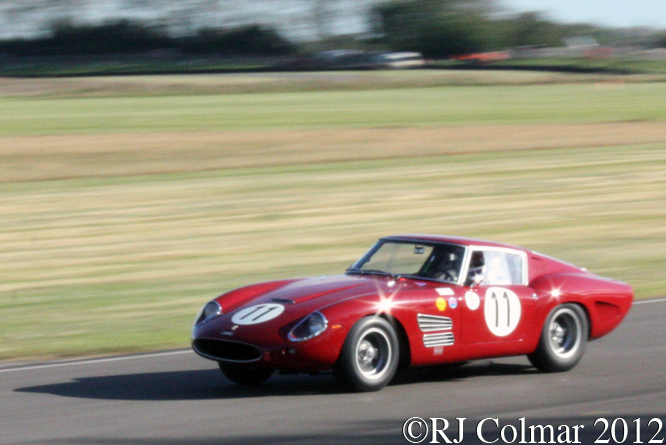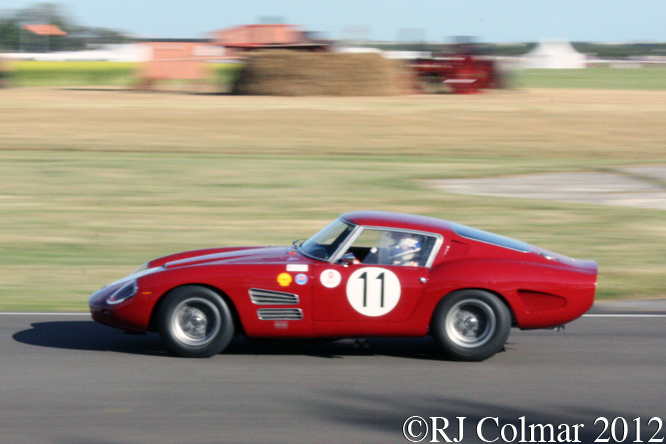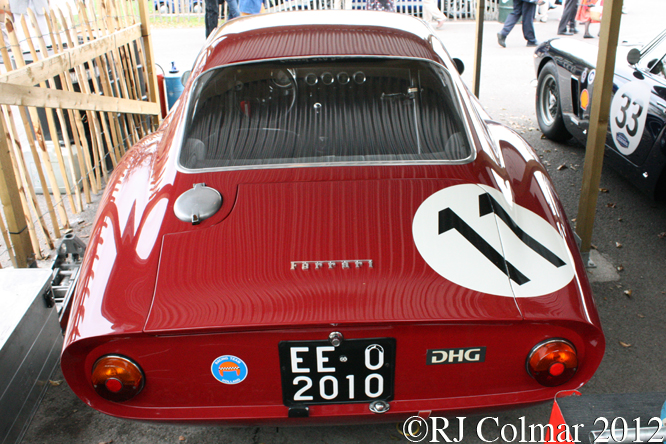The 1961 season ushered in the 1.5 litre / 91.5 cui era of Formula One and only one team was fully prepared for what was to follow, namely Ferrari who had developed a suitable V6 motor for the previous Formula 2 rules. The British manufacturer BRM as usual was behind schedule with it’s V8 motor and so resorted to using the four cylinder Coventry Climax motors that most of the remaining British garagiste entrants were forced to use until the Coventry Climax V8’s became available.
Ferrari entered only seven of the eight championship events and won five of them beaten only by Stirling Moss in an outdated Lotus 18 at Monaco and the Nurburgring. Ferrari team leader Wolfgang “Taffy” von Trips won the Dutch and British Grand Prix, Phil
Hill won the Belgian Grand Prix and privateer Giancarlo Baghetti driving an FISA entered won the French Grand Prix, coming off a run of two non championship Formula One Victories to make him the only man to win from his first three Formula One race starts.
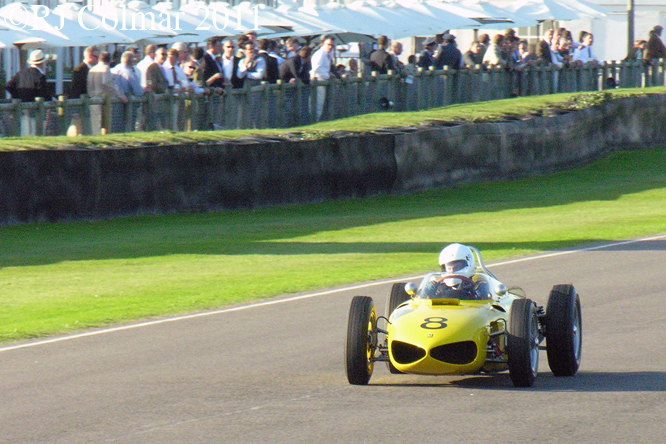
Going into the penultimate race of the championship von Trips lead Phil Hill in points, however despite starting from pole von Trips was involved in an accident with Jim Clark that sent the German’s Ferrari into a collision with a grandstand at the end of the second lap. Consequently Von Trips and 15 spectators were killed and Phil Hill who started forth went on to win both the 1961 Italian Grand Prix and the Championship with one race to go.
Ferrari withdrew from the US Grand Prix, won by Innes Ireland driving a Lotus Climax 21 to record Team Lotus’s first team victory. At the end of 1961 the 156’s designer Carlo Chitti and team manager Romolo Tavoni walked out on Ferrari to found a new team called ATS, leaving Phil Hill and Baghetti joined by rookies Ricardo Rodriguez and Lorenzo Bandini to soldier on with the 156’s in 1962. The cars remained competitive in the opening races of the season but were eclipsed by both the V8 powered BRM P578 and Lotus 25, driven by Graham Hill and Jim Clark respectively, as the season progressed.
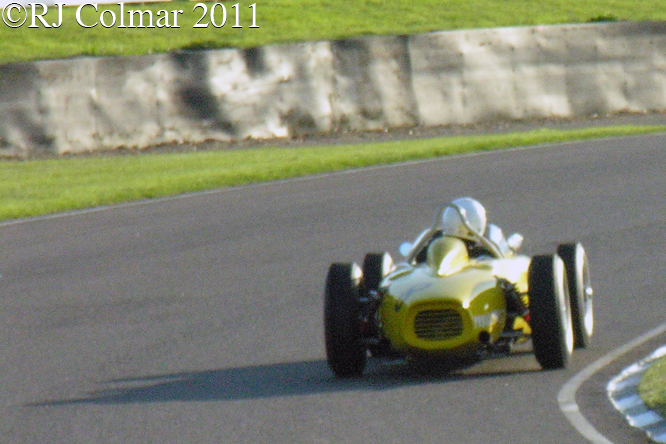
At the end of 1962 Enzo Ferrari had all of the 156’s, known as Sharknoses, broken up with reusable parts saved for future use, while the chassis frames were cut up and used to reinforce a new Ferrari factory floor. For 1963 lighter versions of the 156’s were built in anticipation of a new V8 powered car designed by Mauro “Fury’ Forghieri that John Surtees drove to the 1965 World Drivers Championship Title.
The car driven by Jan Biekens featured today replicates the 65° V6 powered chassis #0002 in the colours of Equipe National Belge driven by Olivier Gendebien to a forth place finish with the three 156’s, all using more powerful 120° V6’s of Phil Hill, von Trips and Richie Ginther ahead of him. Von Trips drove the same car painted red at the Monaco Grand Prix where he was classified 4th after crashing on lap 98 of 100.
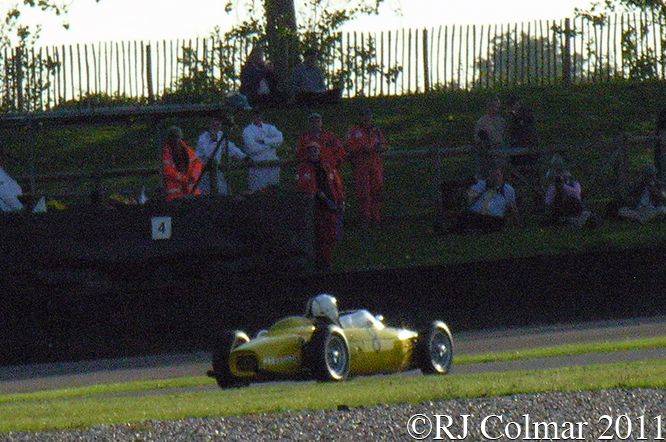
I believe French GP winner Giancarlo Baghetti moved from the FISA to the Scuderia Sant Ambroeus team for the 1961 British Grand Prix at Aintree where he drove the original #0002 still fitted with the 65° V6 qualifying 19th and retiring after an accident having completed 27 laps. At the German Grand Prix Willy Mairesse drove the original repaired #0002 qualifying 13th on the tortuous Nürburgring and crashing out on the 13th of 15 laps.
For the Italian Grand Prix at Monza the original #0002 was fitted with the latest 120° V6 and given to Phil Hill who drove it to victory in the race and championship as outlined above.
In 2004 Jan undertook the building of this replica with Jim Stokes Workshops Ltd and it was completed some five years later using many original parts, you can see a diary of the work progressing in the ‘News’ pages of Jan’s website.
Thanks for joining me on this “Factory Floor Reinforcement” edition of “Gettin’ a li’l psycho on tyres”, I hope you will join me again tomorrow. Don’t forget to come back now !


